News and Features
2016 News
Martin Kalaher's Garden butterfly records, 2016.
Sunday 04 December
Cherry House is situated on the southern outskirts of Storrington with Chantry Hill approximately one kilometre due south and Kithurst Hill about three kilometres, south-east of us. The relative proximity of these two important butterfly sites means that we have a reasonable chance of attracting the occasional downland species. Not that this happens very often with Small Blue, Chalk hill Blue, Wall Brown and Grizzled Skipper all only recorded once in the past 6-7 years.
In brief, the garden has evolved over the years with a deciduous hedge planted on the south and east borders of the garden in 1995, a pond added in 2004, a wildflower meadow established in 2005-2008 (which is still a work in progress) and finally two British-native flower beds, the first of which was added between 2005-2008 and the second in the years 2014-16.
2016 was not unlike 2015 with butterflies scarce until the second half of the butterfly season. The spring was cold and wet and unsurprisingly emergence for most species was delayed, on average by about three weeks. By April 29th I had recorded just four species but April 30th was sunny and positively balmy compared to the awful weather of the previous few weeks. For the first time in 2016 there was quite a lot of activity in the garden with six species recorded. I noticed the diminutive size of both Speckled Wood and Small White, which I attributed to prolonged cold exposure.
On May 1st, there were three male Holly Blues dancing above the Portuguese Laurel. This was encouraging and I thought his species would probably have a good season. On the same day, there was a Brimstone laying eggs on Alder Buckthorn and on the 5th I counted a total of 114 eggs on three, 5-6 foot bushes. Perhaps the most notable sighting in May was a pair of mating Green-veined Whites on the 19th with a bonus that they were perched on flowering White Honesty, a new addition to the garden which we grew from seed in 2015. On May 30th, I counted 78 Brimstone caterpillars (in various states of maturity) on the three Buckthorn bushes.
June was also very quiet but there was a passage of Painted Ladies which began on the 5th when was recorded nectaring on Scentless Mayweed. On the 7th there were at least five individuals with three nectaring on Portuguese Laurel and two seen flying through the garden, heading north. Also on the 7th there was a Holly Blue laying eggs on Portuguese Laurel. I always thought it was Holly in the spring, Ivy in late summer - but clearly not so. No wonder we have so many Holly Blue in the garden for although we do have several Holly trees we have considerably more Portuguese Laurel and no shortage of Ivy, although most of it a variegated garden hybrid. A final Brimstone caterpillar count on the 11th revealed 59 mature caterpillars, which I thought was a pretty good egg-to-caterpillar 'conversion' rate. Adding further testimony to the cold spring/early summer the first record for Large Skipper in the wildflower meadow was June 28th, which as a 'first sighting date' was 15 days later than previous records.
And then, by degrees, it all began to change for the better. On July 6th there were 12 species in the garden, including 6 Marbled White (a garden record), a second-brood Holly Blue and my first Small Copper of the year. The following day an Essex Skipper appeared in the meadow and by the 18th there were small breeding colonies of all three meadow Skippers. By the 20th there were 16 species in the garden (seen over a 3-day period) and by the 26th a garden total of 76 butterflies, which included 12 Red Admiral and 11 Peacock. On the 28th there was a garden total of approximately 95 butterflies with 14 species that included 15 Peacock, 14 Red Admiral, 1 Small Tortoiseshell and 1 Comma (the latter two species very scarce in 2016). On the 30th there were 16 Red Admiral, 14 Peacock and a minimum of 6 Brimstone (4m & 2f), which I suspect had freshly emerged in the garden. Interestingly, although the Buddleia was now in its full glory the Red Admirals and Peacocks much preferred the clump of Hemp Agrimony, which was swarming with butterflies. As for the Brimstone, in my garden they always choose Everlasting Pea above any other nectar source.
There was a little flurry in mid-August with Brown Argus on the 12th, Small Heath and Silver-washed Fritillary on the 14th and Clouded Yellow on the 16th. On September 1st I found three fresh Brown Hairstreak eggs, which took the annual tally to 28 species breaking last year's record of 27 species. Other interesting records for September included a fly-through Clouded Yellow on the 8th heading north, a Painted Lady on the 11th which nectared briefly on Field Scabious before heading south and 4 female Brimstone and 3 Small Copper on the 17th.
The species seen this year with daily maxima in brackets as follows: Small Skipper (5), Essex Skipper (5), Large Skipper (5), Clouded Yellow (1), Brimstone (6+), Large White (6), Small White (8), Green-veined White (2), Orange-tip (6), Green Hairstreak (1), Brown Hairstreak (eggs only), Small Copper (3), Brown Argus (2), Common Blue (7), Holly Blue (5), Red Admiral (16), Painted Lady (5+), Small Tortoiseshell (2), Peacock (16), Comma (1), Dark Green Fritillary (1), Silver-washed Fritillary (1), Speckled Wood (2), Marbled White (6), Gatekeeper (28), Meadow Brown (21), Ringlet (1) and Small Heath (1).
So, what did I find especially satisfying this year? Well, Essex Skipper as a breeding species was right up there. Hordes of Brimstone caterpillars on Alder Buckthorn was a close second. Having nigh on 100 butterflies in the garden in late July was just fantastic. A garden record of 28 species recorded in one season may very well not be surpassed? Otherwise seeing six Marbled White in the wildflower meadow was delightful as was the sight of large numbers of Red Admiral and Peacock, which incidentally favoured British-native Hemp Agrimony over Buddleia! I was concerned about the paucity of records for Small Copper until late in the season but the third brood did well and eventually there were approximately 25 different individuals for the year, which ironically was a garden record.
Not recording Brown Argus or Small Heath until mid-August suggests that my local colonies are not doing well. Very few records for Comma and Small Tortoiseshell leads me to believe that in this part of West Sussex they had a poor season.
My wildlife garden continues to evolve, mostly by small degrees. In 2014, I decided the wildflower meadow was weighted too much in favour of grass species and needed more flowers, mostly perennials but some annuals. In 2015 I established beds of Marjoram and Betony within the wildflower meadow and this made a huge difference to the numbers and variety of insects seen in the meadow. With hindsight, I should have tried to establish these plant species much earlier in the process. Let's call it a learning experience! I confess that it is a bit odd having small beds of plants within the flower meadow, which I weed and spend lots of time nurturing. The 'purist' meadow expert would be most unhappy but the end-result speaks for itself and right now that's all I'm interested in. By high summer you wouldn't know what I have been up to, other than seeing lots of butterflies (and other insects) going about their business. Eventually, I should be able to let it go and then it will appear to be a fully-established 'mature' meadow. Or maybe not; we shall see!
Martin Kalaher
Butterfly Conservation Sussex Branch AGM
Sunday20 November
The Butterfly Conservation Sussex Branch Annual General meeting was held at Lindfield yesterday. Eighty-four members attended, which was slightly down on last year. Perhaps imminent arrival of storm Angus has something to do with this.
The meeting began with official business conducted by our chair, Nigel Symington, who gave an account of the wide-reaching conservation work conducted by the branch in the past year in both counties. Two new members were elected to the committee.
Jess Price, Branch Treasurer, gave a brief summary of our accounts. We have money in the bank and we are spending almost all of it on conservation work and plan to continue to do so with future funds raised.
After the official business, Neil Hulme reported on the "Fritillaries for the Future" project which has been running since April 2015. He outlined the depressing long term decline of both Pearl-bordered and Small Pearl-bordered Fritillary numbers throughout the country, and linked the recent extinction events in Sussex to both habitat loss and climate change. Neil also talked about how climate change was making habitat management even more difficult, and highlighted the problems facing attempts to reintroduce these species into sites from which they had become extinct.
This was sombre stuff, but we can take heart from the determination of the Sussex branch and its members to do their utmost to create the best habitats possible for these rare and beautiful butterflies. Neil concluded with some positive news about the Duke of Burgundy, which was teetering on the edge of extinction in Sussex a few years ago, but now, thanks to relentless conservation efforts, has been colonising a number of new sites and reached numbers not seen for many years.
Following Neil's talk there was a questions and answers session and then tea and cakes and a chance to look at Jamie Burston's artwork which was on display. The afternoons activities resumed with an exotic raffle hosted by Michael Blencowe and Carole Mortimer. I met a long-time Sussex branch member who lived in Cornwall and had come up for the meeting, and was pleased to see him win a bottle of wine. Other prizes included a book by Matthew Oates, calendars, Jamie's artwork, a cheap cake decorating kit and some dog poo bags.
The afternoon concluded with a highly entertaining talk entitled "Wild Adventures Beyond the Back Door" by Adrian Thomas of the RSBPB who amongst other things writes the Gardening for Wildlife blog.
I would like to offer a big thank you to all those who helped organise the event, to those who donated prizes for the raffle, to those who provided the wonderful refreshments, to our guest speakers and of course all the members who attended depite the gathering storm.
Jonathan Crawford
Conservation Work Party at the Warnham Butterfly Fields
Wednesday 16 November
Yesterday I joined David Bridges at a Conservation Work Party at the Warnham Butterfly Fields, where 40 people came along to reduce encroaching scrub on this species-rich site.
Home to 34 species of butterfly, from the humble Meadow Brown to the majestic Purple Emperor, this site has become increasingly overgrown in recent years to the detriment of the butterflies that live and breed there.
Thanks to financial contributions from Warnham Parish Council and Butterfly Conservation Sussex Branch, which enabled us to hire a tractor and flail for three days, and the energetic efforts of volunteers from the Warnham butterfly group, Horsham Green Gym and Horsham District Council Countryside Services, we have now restored large sections of habitat on this 20 acre site to provide a varied mix of open, meadow areas, sunny rides and pockets of blackthorn and Sallow scrub, which will benefit the Brown Hairstreak and Purple Emperor respectively. A small experimental south-facing butterfly bank was also created to provide Dingy and Grizzled Skippers with a warm area on which to bask in the early spring.
At the end of the day, Nigel Symington presented a cheque from Butterfly Conservation to David Jessop of the Horsham Green Gym as a contribution to the out of pocket costs of their work.
Nigel Symington
Doing the work of Elephants: Rowland Wood and Park Corner Heath - Conservation work party
Tuesday 15 November
Last Sunday's Conservation Work Party at Park Heath Corner took place under a glorious blue sky. About a dozen volunteers turned up to continue the clearance of scrub begun last month, whilst Beech and Hornbeam leaves continuously fell gently to the ground all around them.
We are making clearances in the forest to promote the growth of woodland plants such as bugle and dog violet, which are the food plants of butterflies such as the Pearl-bordered fritillary. Thousands of years of coppicing by humans maintained a cycle of woodland clearing which came to an end in the twentieth century, hence the need for our attention today. As I was working away I wondered how clearings would have been created and maintained before humans started to interfere with the ecology of our planet. So I asked Bob Foreman, Reserve Manager, who was working close by. "Elephants." He replied straight away, then added "and Aurochs". It seems that long ago, now extinct European elephants first made the forest clearings in which woodland plants and butterflies evolved, and that Aurochs kept them clear. We are now just continuing their work.
Later on, Bob showed me the leaf miner Stigmella tityrella in a Hornbeam leaf. The tiny moth caterpillar lives inside the leaf and in Autumn creates a "green island" by preventing the tree reabsorbing the chlorophyll in the leaf.
Every one worked hard and much scrub was cleared, so thank you to everyone for taking part. A little egret flew overhead, a toad was found and yes there was gingerbread cake for everyone. Perfect.
The next Conservation work party at Rowland Wood and Park Corner Heath is on Sunday December 11th and everyone is welcome.
Jonathan Crawford
Bevendean Down conservation work party dates added
Friday 04 November
Bevendean Down is an area of chalk grassland on the north east edge of Brighton.
Friends of Bevendean Down is a small but active group which has been working here for twenty five years trying to stop the scrub and course vegetation from swallowing the chalk grassland.
Find out more about conservation work parties at Bevendean Down here.
The next conservation work party at Bevendean Down is on Sinday November 20th.
New conservation work group formed for Butterfly Conservation Oaken Wood Reserve
Saturday 29 October
A new conservation work group has been formed for Butterfly Conservation's Oaken Wood Reserve, near the Sussex Surrey border, under the direction of Bill Downey of the Surrey Branch. It is hoped that this will give members of both branches an opportunity to work together to improve this important site for butterflies.
Find out more about conservation work parties at Oaken Wood here.
The first Conservation work party at Oaken Wood is on Tuesday December 6th.
Sign up for brushcutter training
Saturday 15 October
As part of my Fritillaries for the Future project I am able to offer free training in the use of the brushcutter (like a large but rather more aggressive garden strimmer) at Plumpton College, with a day training on either 21 or 22 November being followed by assessment on either 24 or 25 November. The certificated and safe use of these machines will prove invaluable in assisting with the future upkeep of our reserves. Please let me know if you would like to take up this offer, or find out more, by 'phoning me on 07717 663578 on Monday, Tuesday or Wednesday (17 - 19 October). I will be leading a course on Monday, so please leave your contact details if I don't pick up.
Neil Hulme, BC Fritillaries for the Future Project Officer
UK Moth Recorders' Meeting Programme revealed
Friday 14 October
Rowland Wood and Park Corner Heath - Conservation work party
Sunday 9 October
The first of the seasons Conservation work parties at Rowland Wood and Park Corner Heath took place on Sunday 9th October under a blue sky and in glorious sunshine.
Butterfly Conservation Sussex planted a dozen disease resistant Elms a number of years ago to encourage White-letter Hairstreaks onto the reserve. Over the past few summers scub land had completely enveloped some of these Elms, so that they were no longer visible. The first task of the day was to clear this scrub to provide the Elms with room to grow.
There are two ponds on the reserve. The smaller pond is ephemeral, drying up in summer and filling again when the Autumn rains come. Because September had been so dry the island at the centre of the pond was still accessible, despite being surrounded by twelve inches or more of thick mud. The island has become overgrown with Willow, which accelerates the drying up process. If left unchecked, this will ultimately lead to the loss of the pond and its ecosystem. The second task of the day was to cut back the Willow and clear away the cuttings.
The conservation work party was attended by a dozen volunteers. For a while there was some doubts as to whether the promised gingerbread would arrive, but these proved to be unfounded. Bob called out as a large bird drifted overhead but was instantly obscure from view. Michael was pretty sure it was an Osprey. He also spotted a Sparrowhawk, which was the cause of considerable alarm to the local Great Tits.
The next Conservation work party at Rowland Wood and Park Corner Heath is on the 13th November and everyone is welcome.
"Some like it hot", a talk by Graeme Lyons of the Sussex Wildlife Trust on October 19th
Sunday 9 October
Murray Downland Trust Annual Talk - Some like it hot...
Graeme Lyons of the Sussex Wildlife Trust has been looking for the insects of the Murray Downland Trust Reserves.
What did he find and why are they there?
October 19th, 19.00, Cobden Hall, HEYSHOTT (opposite the church)
Graeme Lyons, Sussex Wildlife Trust's ecologist, will be presenting the results of his insect survey on the MDT's South Downs nature reserves. His talk is open to all and there will be refreshments. We understand that Grame has discovered species which were previously unrecorded in Sussex so a fascinating evening is envisaged.
State of Nature 2016 Report
Saturday 17 September
The State of Nature 2016 report has just been published. The report was funded by the RSPB and produced by a group of more than 50 wildlife organisations including Butterfly Conservation. The report makes good use of Butterfly Conservation's extensive datasets and data provided by Branch volunteers, underlining the vital importance of this work.
Martin Warren, Chief Executive of Butterfly Conservation attended the launch where Sir David Attenborough, President of Butterfly Conservation, gave a rousing introduction.
State of Nature 2016 Report Headlines
- Between 1970 and 2013, 56% of species declined, with 40% showing strong or moderate declines. 44% of species increased, with 29% showing strong or moderate increases. Between 2002 and 2013, 53% of species declined and 47% increased. These measures were based on quantitative trends for almost 4,000 terrestrial and freshwater species in the UK.
- Of the nearly 8,000 species assessed using modern Red List criteria, 15% are extinct or threatened with extinction from Great Britain.
- An index of species' status, based on abundance and occupancy data, has fallen by 16% since 1970. Between 2002 and 2013, the index fell by 3%. This is based on data for 2,501 terrestrial and freshwater species in the UK.
- An index describing the population trends of species of special conservation concern in the UK has fallen by 67% since 1970, and by 12% between 2002 and 2013. This is based on trend information for 213 priority species.
- A new measure that assesses how intact a country's biodiversity is, suggests that the UK has lost significantly more nature over the long term than the global average. The index suggests that we are among the most nature-depleted countries in the world.
- The loss of nature in the UK continues. Although many short-term trends suggest improvement, there was no statistical difference between our long and short-term measures of species' change, and no change in the proportion of species threatened with extinction.
- Many factors have resulted in changes to the UK's wildlife over recent decades, but policy-driven agricultural change was by far the most significant driver of declines. Climate change has had a significant impact too, although its impact has been mixed, with both beneficial and detrimental effects on species. Nevertheless, we know that climate change is one of the greatest long-term threats to nature globally.
- Well-planned conservation projects can turn around the fortunes of wildlife. This report gives examples of how governments, non-governmental organisations, businesses, communities and individuals have worked together to bring nature back.
- We have a moral obligation to save nature and this is a view shared by the millions of supporters of conservation organisations across the UK. Not only that, we must save nature for our own sake, as it provides us with essential and irreplaceable benefits that support our welfare and livelihoods.
- We are fortunate that the UK has thousands of dedicated and expert volunteers recording wildlife. It is largely thanks to their efforts, and the role of the organisations supporting them, that we are able to chart how our nature is faring.
- The UK's Overseas Territories (OTs) are of great importance for wildlife globally; over 32,000 native species have been recorded in the OTs, of which 1,557 occur nowhere else in the world. An estimated 70,000 species may remain undiscovered in the OTs.
- The UK has commitments to meet international environmental goals, such as those in the Convention on Biological Diversity's Aichi Targets and the United Nation's Sustainable Development Goals. However, the findings of this report suggest that we are not on course to meet the Aichi 2020 targets, and that much more action needs to be taken towards the 2030 Agenda for Sustainable Development if we are to meet the Sustainable Development Goals.
You can download the reports from the RSPB website.
State of Nature 2016 report introduction
England State of Nature 2016 report
"We owe the RSPB huge thanks for funding the whole thing and seconding staff to produce the report". Says Martin Warren.
Roedale Valley Allotments, Sightings April to August 2016
Saturday 23 August
In addition to the work on our Butterfly Conservation -Sussex Branch plot, at Roedale Valley Allotments, I independently conduct the occasional survey over the 200+ plots on site. Below gives an idea of the species and numbers seen on these survey walks taken this year. During July my focus was drawn away from the Allotment whilst conducting White-letter Hairstreak surveys across Brighton, this explains the lack of species noted. Following this I will post directly onto the sightings page, to keep you informed of what I'm seeing as and when it happens on the Allotment.
April
6 Small White, 1 Large White, 1 Comma, 1 Peacock, 1 Green-veined White.
May
1 Small Purple & Gold, 2 eggs and 15 adult Orange-tip, 2 Brimstone, 2 eggs and 7 adult Holly Blue, 2 Red Admiral, 2 Peacock, 5 Green-veined White, 7 Small White, 12 Large White and 3 White-letter Hairstreak caterpillars, including one I filmed (nice view of the Allotment aswell) .
June
1 Speckled Wood, 1 Holly Blue, 2 caterpillars and 2 adult Orange-tip, 6 Large White, 5 Small White, 13 Small Tortoiseshell caterpillars (photo), 1 Red Admiral, 2 Painted Lady, 2 Magpie and 1 Silver Y.
July
5 Marbled White, 7 adult White-letter Hairstreak and 2 Magpie.
August
Survey totals for 8th August: 14 Red Admiral, 12 Meadow Brown, 19 Small White, 7 Peacock, 4 Comma, 5 Green-veined White, 4 Speckled Wood, 6 Gatekeepers, 1 Essex Skipper, 1 Holly Blue, 1 Brimstone, 7 Large Whites and 11 unidentified Whites. Additionally 1 Ruby Tiger and 12 Cinnabar caterpillars, these small caterpillars were found away from Ragwort, sitting motionless on various plants including Wild Strawberry, feeding damage was also found on one plant (photo below) - What would they be doing away from Ragwort behaving in such a manner?
More recently on the 13th August I saw a female Red Admiral laying an egg on nettles, I was able to show the site reps the freshly laid egg and a nearby Comma. Additionally my first Common Blue for the site, for this year. I was also amazed to watch a Brown Argus on one of the plots, suddenly joined by another, with camera already in hand I was pleased to record courtship, totally unexpected and the first time I've observed such behaviour, which you can see here.
Lastly on the evening of the 15th August I observed a Painted Lady taking nectar from Teasel.
Broad-leaved Everlasting Pea is now in flower!
Jamie Burston
A259 Buckle By-Pass, Seaford - Cotoneaster clearance approved
Saturday 13 August
The A259 Buckle By-Pass, Seaford site was registered as a wildlife verge 25 years ago, principally on account of the Small Blue butterfly and an interesting flora. Since then a number of garden escapes have begun to colonise - you may well have read something of its Mediterranean appearance via Neil Hulmes` recent 2013 and 2015 accounts of the Long - Tailed Blue. While most of the shady Southern slope has since scrubbed over, much of the sunny and exposed Northern slope remains; however it, too, is succumbing due to lack of maintenance and requires work to prevent the butterfly becoming extinct here.
After a lot of negotiation with the owners, East Sussex County Council, they have agreed to permit Sussex BC to carry out Cotoneaster clearance work. The project will be led by David Harris. There is an astonishing amount of Cotoneaster there, and David met up with an expert in this field who knows this site well. The expert identified 14 different species of Cotoneaster! The target species to tackle is the Wall Cotoneaster, and the idea is to continue each September for at least 5 years until seedling regrowth of that species reduces to an acceptable level.
More information about the clearance work in September 2016 to follow.
The Butterfly Conservation Silver-studded Blue Project: End of season update
Saturday 13 August
No more Silver-studded Blue sightings came in last weekend, so I think we can assume the flight season is winding down. The weather this season hasn't been great but thankfully the butterfly enjoyed some good patches of nice weather and there were some nice reported sightings of butterflies pairing up and egg laying.
The map of reported sightings is attached.
You can download a map of sighting to date here
 .
.
Thank you to everyone who has contributed to this. It has delivered unprecedented survey coverage and given us a reliable picture of current distribution, helping to determine where best to target conservation effort.There might be a few more records to come in through the various recording methods.
Next step:
The Conservators of Ashdown Forest and also other land managers now need to plan where to deliver habitat work and create butterfly monitoring plots. If you would like to propose a location for a monitoring location please let me know. Also please let me know if you would be willing to check this plot each year to see if it is being used by the Blues. These plots could be. close to an existing colony (creating new habitat to be colonised), within an existing colony (hopefully to build up and boost the population), or in a promising but more remote spot. Do you have a favourite spot you'd be willing to keep an eye on?
Any and all proposals will be considered. When these locations have been agreed I will send out a map showing where the monitoring plots will be.
More about "The Butterfly Conservation Ashdown Forest Silver-studded Blue Project"
Steve Wheatley
"Bees and Butterflies" by Colin Knight of BC Sussex
Tuesday 2 August
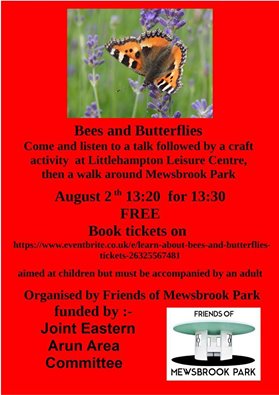
On Tuesday 2nd August Butterfly Conservation Sussex branch member Colin Knight gave a presentation entitled "Bees and Butterflies" at the meeting room at Littlehampton Swimming & Sports Centre.
18 children and 12 adults attended the event which was organised by Friends of Mewsbrook Park. The Friends received a grant for the talk, and later presented Colin with a cheque for BC Sussex for ?50.
The children got giveaways from the Friends, to which Colin was able to add insect related items. After the talk there was a craft session with the children making Butterfly Cards.
Colin reports that a thoroughly enjoyable experience was had by all, including himself.
The Butterfly Conservation Silver-studded Blue Project: Update
Wednesday 27 July
Just when I thought the Silver-studded Blue season might be over, Steve Alton from the Ashdown Forest Conservators has reported seeing 4-6 Silver-studded Blues in the valley near Poundgate on the east of the Forest. Steve suspects there could be more to find in this valley, so if you get chance this week or this weekend it might be worth searching.
You can download a map of the Kings Standing to Poundgate area here
 .
.
The other area left to search is north of this, up towards Wren's Warren. A blue was recorded here in 2012 by Simon Quin.
You can download a map of the Wren's Warren area here
 .
.
More about "The Butterfly Conservation Ashdown Forest Silver-studded Blue Project"
Steve Wheatley
The Butterfly Conservation Silver-studded Blue Project: Update
Friday 22 July
There have been many more searches of Ashdown Forest this week and we've managed to add a few more sightings to the map . Thank you to everyone who has been out looking for the lovely butterfly.
You can download a
pdf of the latest sightings here  .
.
The most recent sighting reported to me was Wednesday, so it's reasonable to expect they will still be flying this weekend. If you get time, please do try one more search and let me know where you searched and if you found any Silver-studs.
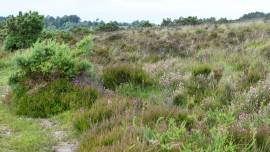
Ashdown Silver-Studded Blue habitat, Tom Lee
Here is a nice photo from Tom Lee of an area where he found the butterfly. This provides a really good illustration of the kind of area (edges with a rich mix of heathland plants, sparse grasses and bare ground) the butterfly seems to prefer. Bramble flowers are also worth looking out for. The project would certainly welcome more photos.
More about "The Butterfly Conservation Ashdown Forest Silver-studded Blue Project"
Steve Wheatley
The Butterfly Conservation Silver-studded Blue Project: Update
Monday 18 July
The weather has finally improved and is now providing good opportunities to look for butterflies.
A couple of new Silver-studded Blue sightings have been added to the map..
- I spotted a single male Silver-studded Blue at Chlewood Vachery.
- John Kerby got in contact to say he has been watching a small colony in the valley ("Old Lodge Stream") between Old Lodge and Friends Car Park.
- A report of a blue in a Crowborough garden not surprisingly wasn't a Silver-stud, but a female Holly Blue - still a nice record, and it's good to know the message is getting out and people are looking.
You can download a large
pdf of the latest sightings here  .
.
Please do also take part in the Big Butterfly Count running until 7th August.
Steve Wheatley
The Butterfly Conservation Silver-studded Blue Project: Update
Saturday 16 July
Thank you to everyone who's been out looking for the lovely Silver-studded Blues on Ashdown Forest. The weather has continued to make it difficult but hopefully there is some good weather coming up.
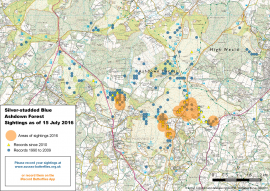
Silver-studded Blues, latest sightings
The picture remains worrying, with no reported sightings outside the recent known distribution - see the map. I'm still offering a (small!) prize to the person who
finds a colony in the most remote location.
You can download a large
pdf of the map here  .
.
Here is a compilation of last sightings on the forest by year. This shows that the earliest last sightings have been around mid-July but the average last sighting is around the first week in August.
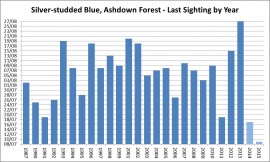
Silver-studded Blue in Ashdown Forest - Last sightings by year
This data is from the Butterflies for the New Millennium database. Please note our County Recorder and our Sussex Branch volunteers might hold later records for 2014 and 2015 that have not yet filtered through to the national database.
Do please continue looking. I'll continue to share the news. Please do also let me know if you look for the butterfly but don't find it. This is very important information also.
More about "The Butterfly Conservation Ashdown Forest Silver-studded Blue Project"
Steve Wheatley
Butterfly News: The absence of abundance
Sunday 10 July
On Wednesday (6 July) I visited Chantry Hill (Storrington) in order to see my first Dark Green Fritillaries of the year. Were it not for the fact that I have now adjusted my expectations of the 2016 butterfly season to the very lowest level, I would have hoped to see in the region of 100 - 150 DGF here; I saw nine. On this warm, sunny afternoon there was a very noticeable lack of butterflies in general, over this area of prime chalk grassland. All of the species I would normally see here in abundance were present in pitifully low numbers.
I have heard surprisingly little negative commentary about the 2016 season, bearing in mind just how bad it is, at least in Sussex. Yes, I know there are exceptions (particularly the Duke of Burgundy), but this posting is not about exceptions. I'm struggling to remember a poorer year for butterflies, aside from the historically dreadful 2012. Many species have suffered a real stinker; others have had it much worse.
Amongst the biggest losers has been the humble Meadow Brown. When I've made this point in discussion the response has sometimes been along the lines: "really? I saw at least 50 at Site A yesterday". The problem is that there should have been 500, or perhaps 2000. There have been days at Knepp recently when Meadow Brown has been outnumbered, or nearly so, by Purple Emperor.
I mentioned the possible reasons for such an awful season in one of my UK Butterflies diary posts and believe that the evidence is building further. Whereas the increase in the frequency of detrimental, extreme weather events (courtesy of climate change) is sometimes more obvious - such as the wash-out summer of 2012 - other forces may be at work, acting in a more stealthy manner. I've become increasingly convinced that the exceptionally mild (and wet) December of 2015 is largely responsible, with temperatures 5 - 6 deg. C above average in southern England, and an outrageous UK high of 17.2 deg. C.
It is not unreasonable to expect that species which overwinter either as an ovum or pupa are likely to be less adversely affected by a very warm December than those which overwinter as a larva or imago. Caterpillars in particular are likely to become active under these atypical conditions, and the potential consequences are obvious.
Based on my own, personal assessment of the Sussex season so far, I have produced the attached summary tables - see image. It is not difficult to spot the fundamental trend.
(The following species have not been included in this assessment: Brown Hairstreak, Chalk Hill Blue, Grayling and Silver-spotted Skipper; Essex Skipper, Gatekeeper and Purple Emperor; Clouded Yellow, Painted Lady and Red Admiral, either because they are yet to emerge, or it is too early in their flight season to tell, or because they are at least primarily immigrants)
We know how resilient butterflies can be and we saw how many species made a miraculous recovery after the gloom of 2012. Multivoltine species in particular are capable of bouncing back quickly. Unfortunately, several species in SE England are currently at extreme risk.
What can be done in the face of climate change? It is becoming increasingly obvious that butterflies are only likely to survive this rollercoaster ride when they form large colonies over extensive areas of suitable habitat in excellent condition. Butterflies have never needed our help so much as they do now.
Neil Hulme
Comments
The Butterfly Conservation Silver-studded Blue Project: Update
Saturday 9 July
Thank you to everyone who has submitted sightings so far.
- 12 were recorded at the old radio station.
- Others have been recorded nearby, around Smugglers car park and Hollies car park.
- A search from Long Car Park, west of the A22, yielded no sightings, but the weather conditions weren't great.
- Paul Johnson has re-found the butterfly east of Duddleswell, at the far end of New Road, close to the A26.
We've still no records this year from Old Lodge reserve or any of the previous outlying locations around the forest.
The map of historic records is available here:
http://www.sussex-butterflies.org.uk/conservation/silver-studded-blues/Map-Ashdown-Forest-Silver-studded-Blues.pdf
When the sun comes out do please get out onto the forest and look out for this increasing rare butterfly. Please encourage others to keep an eye out, too.
Please do also let me know if you go looking and DON'T find Silver-studded Blues. This information is useful too.
More about "The Butterfly Conservation Ashdown Forest Silver-studded Blue Project"
Steve Wheatley
The Butterfly Conservation Silver-studded Blue Project: Help needed to search for Silver-studded Blues within the Ashdown forest
Friday 24 June
Butterfly Conservation is beginning a new drive to help the Silver-studded Blue in East Sussex and would like people to look for them around Ashdown Forest. Please get out to Ashdown Forest through June and July and report your sightings here.
The Ashdown Forest Silver-studded Blue population represents the smallest and most isolated population in South East England and the only population in East Sussex after the Chailey Common colony became extinct in 2005.
We want survey the whole of the forest and not just the known sighting areas. We will be offering a small prize to the person who finds Silver-studded blues in the most unexpected place.
 Download a Silver-studded Blue Ashdown Forest distribution map as a PDF
Download a Silver-studded Blue Ashdown Forest distribution map as a PDF
For more information contact swheatley@butterfly-conservation.org.
Significant new colony of Small Blues found near Patching
Friday 24 June
Last Sunday (19 June) I led a walk for the Clapham & Patching Horticultural Society, starting from Clapham Church. With the season running late and woodland species yet to emerge we headed towards Long Furlong. Having passed through beautiful coppiced woodland and over sheep-grazed downland slopes we reached the butterfly hotspot I had located earlier that day .... a re-engineered road verge, just north of Clapham village. Although it had clouded over by the time of the walk, we still managed to locate plenty of butterflies here, together with Bee and Southern Marsh orchids. Elsewhere on the slopes we saw plenty of Pyramidal and Common Spotted.
However, the big news was the presence of a significant Small Blue colony. Despite it now being quite late in the flight period (first brood) I counted more than 40 earlier in the day. A late May visit is required next year to determine the full size of this population. Also seen either before or during the walk were Marbled White, Common Blue, Small Heath, Meadow Brown, Large Skipper and Painted Lady. Never underestimate a road verge.
Neil Hulme
Richard Roebuck to step down as secretary of the Sussex branch - New secretary required
Sunday 12 May

Richard is standing down for personal reasons. He will continue to serve the branch as a committee member. The committee would like to thank Richard for the energy and enthusiasm he has applied to the role.
The branch is now looking for a new secretary. You do not have to be butterfly expert fill the role and you get a ringside seat at some very interesting discussions about butterflies and conservation in Sussex.
Branch Secretary Role Description
The Secretary shares responsibility with the other members of the Branch Committee for all aspects of BC Branch activities. The Secretary's role is to ensure that all Branch Committee members and Branch committee meetings are serviced efficiently and effectively. Key Tasks:
- To co-ordinate the paperwork for Branch Committee meetings, and provide support to the Branch Chairman when planning and running the meetings.
- To attend Branch Committee meetings and take minutes at each meeting.
- To take minutes at each Branch Annual General Meeting (AGM) and support the organisation of the meeting. Specific Responsibilities:
- To organise the booking of the venue for the committee meetings and coordinate, in a timely manner, the distribution of agenda and papers ahead of the meetings.
- To circulate the minutes promptly to Committee members and BC Head Office and make them available, on request, to Branch members.
- To circulate AGM minutes to committee members and BC Head Office, make them available, on request, to any Branch member and to distribute them to all those who attended the AGM.
- From time to time, attend National and Regional meetings, workshops or seminars.
- Maintain good communication with all the members of the Branch Committee.
- To retain the paper records (or copies) of all committee meetings and facilitate the administration work of the Chair.
If you would like to be the new secretary or would like some more information on the role, please contact richard@roebuckonline.co.uk
Hampshire branch of Butterfly Conservation publish a new book of Butterfly Walks
Sunday 12 May
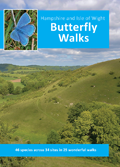
Hampshire and Isle of Wight Butterfly Walks
By Hampshire and Isle of Wight branch of Butterfly Conservation.
Written by Kevin Freeborn and illustrated by Ashley Whitlock's super butterfly photography, the book offers the exciting prospect of seeing all 46 Hampshire and Isle of Wight butterfly species in 25 walks.
This is the perfect introduction to butterflies and to some of the very best sites for seeing them in both Hampshire and the Isle of White. The routes visit 34 outstanding places of wildlife interest and take in wonderful butterfly habitats on heath and down, in woodland and along the coast. For more information and to buy the book go to http://butterfly-conservation.myshopify.com/products/hampshire-and-isle-of-wight-butterfly-walks.
All money raised from sales of the book is going to Butterfly Conservation.
Do you have a favourite butterfly walk in Sussex that you would like to share it with us? Send it to web@sussex-butterflies.org.uk
Butterfly News: Duke of Burgundy update
Saturday 11 June
I was delighted when WSCC ranger Pauline Chandler sent me the appended image, taken on 8 June in a glade within a wooded section of the Fairmile Bottom LNR near Arundel. This is some distance from the area where I spotted a Duke of Burgundy on 5 June, which I had interpreted as a 'dispersing female'. This might be another colonisation, but only time will tell.
Earlier in the flight season I found up to 5 Duke of Burgundy at Washington Chalk Pits, where they have been absent since the early 1990s. It gave me great pleasure to show these to Richard Goring of the Wiston Estate. Eagle-eyed Richard Roebuck subsequently found Dukes here independently.
2016 has also seen the discovery of new colonies on the Downs near Storrington and on the Graffham Down Trust reserves. A significant dispersal of Duke of Burgundy cleared occurred during the spring of 2015, just as my back was turned for the first time in more than a decade, as my attention turned to fritillaries. With numbers this high and weather conditions perfect, I suspect that this usually sedentary species may venture forth once again.
The good news continued to roll in this spring, as Fiona Scully of the National Trust relocated the species at Treyford Hill, not far from her home patch at Harting Down, where the Dukes are still doing well.
Between 1 May and 10 June I have collated nearly 1500 records of Duke of Burgundy, over a total of 12 colonies. As I don't wish to tarnish such an upbeat message, I'll avoid making reference to any other species, for which 2016 continues to underwhelm.
Michael Blencowe
Butterfly News: Park Corner Heath / Rowland Wood update
Monday 28 May
I headed out to our Park Corner Heath / Rowland Wood reserve today to undertake some survey work. What I saw was absolutely amazing. The weather had seemed quite nice on the drive over but as I passed Laughton I was amazed to see their village green was underwater! Turning into Park Lane and driving through Vert Wood the place looked like a winter wonderland - the ground was dusted white and there were piles of hailstones everywhere - the biggest hailstones I have ever seen!
I parked at the reserve and straight away I was stunned by the sound of water - there was water running everywhere; streams were gushing out of the wood into Park Lane which was itself flowing towards the A22! I've seen these woods wet before but I had never seen anything like this. The Park Corner Heath pond; an ephemeral pond which usually starts to dry out in June was now the fullest I have ever seen it. Water was pouring into it from countless new streams and the small gully which usually fills it was an impassable torrent. The plateau was covered in pools of water and rainwater was still flowing across it. The snake sheets were submerged and there were piles of leaf litter leaving 'high tide marks' all over the reserve. The small gully that leads away from the pond has usually stopped running at this time of year.
A few weeks back I had installed a few deadwood dams to create
some damp puddles. This gully was now a channel of deep water. To my amazement the heavy logs I had laid across the stream had been lifted
by the force of the water and had been carried downstream. Incredible. It seems this small area of the county had been visited by a freak
localised downpour overnight. Neighbouring homes were flooded and the A22 had to be closed; yet less than a mile away there was no sign of anything
more than a light shower. The one survivor of this biblical downpour was a Pale Tussock moth gripping on to the bracken
by its furry legs.
Michael Blencowe
Butterfly News: Duke of Burgundy update
Monday 28 May
The Sussex Duke continues to go from strength to strength, enjoying its best season for decades. On 23 May I discovered a large, new colony on the Downs near Storrington, marking a further, small step eastwards in its recolonisation of the landscape.
On 27 May I returned to this area, and my total count over three colonies reached a staggering 221 individuals, including many freshly emerged males. Eight years ago there were none here.
On both dates I visited a site almost 3km further east, as it was apparent that this species has undergone a phase of significant dispersal in the last couple of years. I'm delighted to report that the Duke has returned here, after being lost in the early 1990s (an announcement will be made shortly). For this reluctant traveller, this is a very large step in the right direction.
This remarkable recovery is based on many years of hard work, by many people and several organisations, all of whom should be congratulated for the part they
have played. Some are worthy of particular mention. The Murray Downland Trust and its volunteers, supplemented by a
strong BC Sussex contingent, have been outstanding in revitalising the fortunes of the Duke in the west.
The huge population at Heyshott has now spread onto ground prepared by the Graffham Down Trust.
The South Downs National Park Authority (and formerly the SD Joint Committee) has always been our closest ally in the work to recover this species from the brink. In the east, around Storrington, national park ranger Simon Mockford has helped at every stage in the work performed since 2005. I can think of no better example of the benefits provided by working in close partnership with other individuals and groups. Along the way there has never been anything other than complete co-operation.
Underpinning all this work are our members, without whose support none of this could have been achieved. Over the weekend we should all take a moment to reflect on this success,
and raise a glass to the Sussex Duke.
Neil Hulme




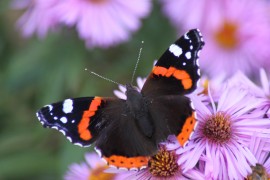
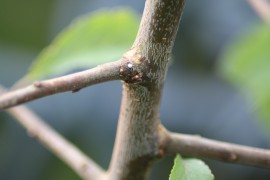
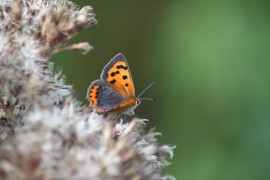
-8517479980.jpg)
-4163048416.jpg)
-7629557601.jpg)
-7667726352.jpg)

-7920221481.jpg)
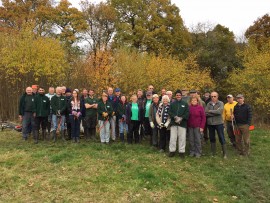
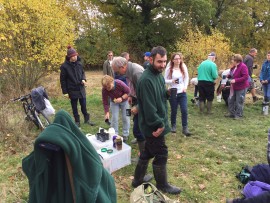
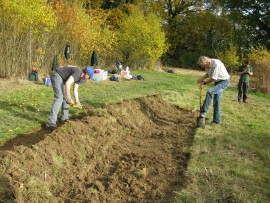
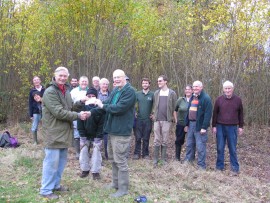
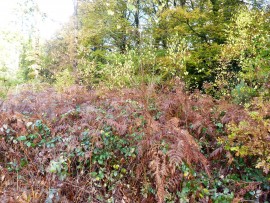
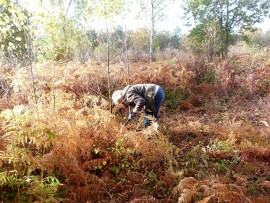
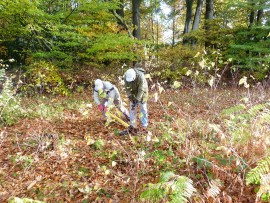

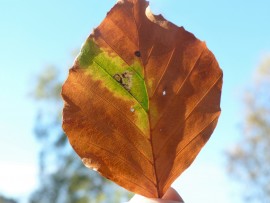

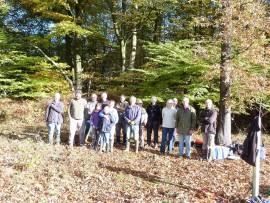
-1738526504.jpg)
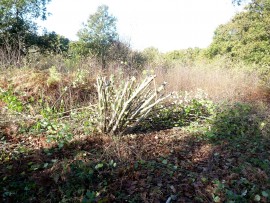
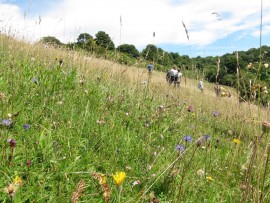
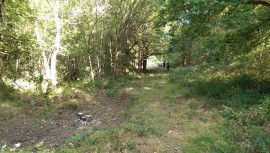
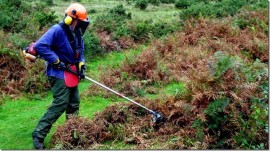
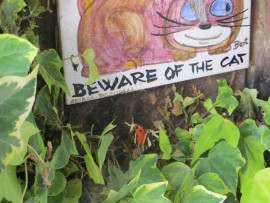
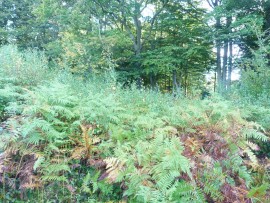
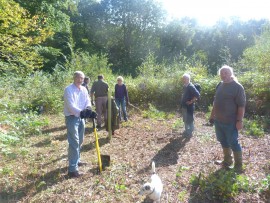

-8016881132.jpg)
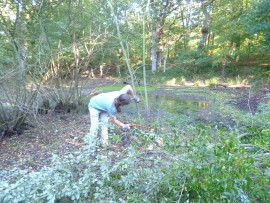
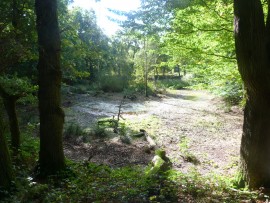
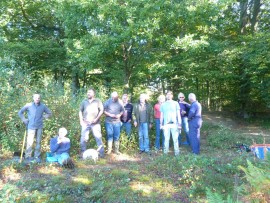
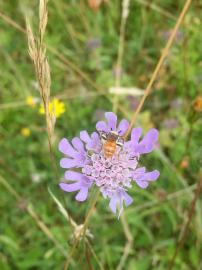
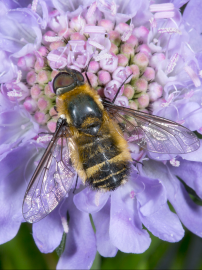
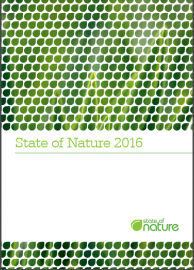
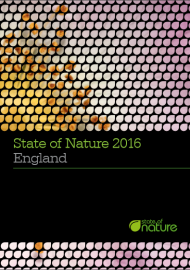
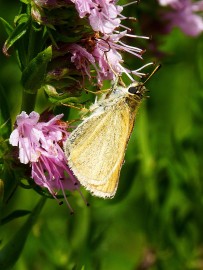
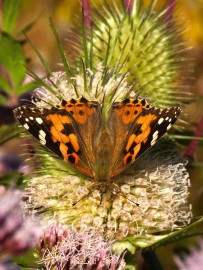
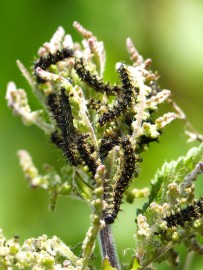
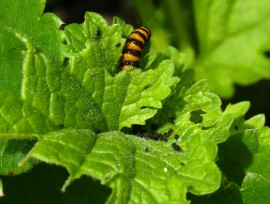
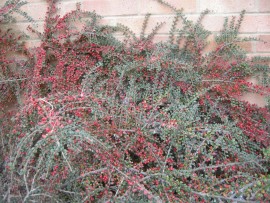
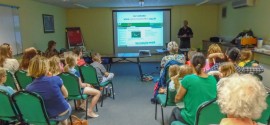
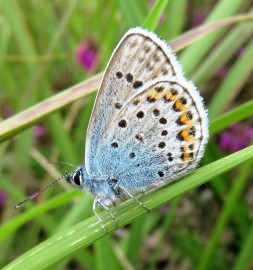
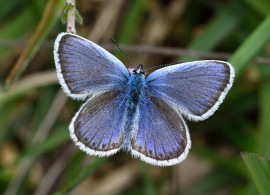
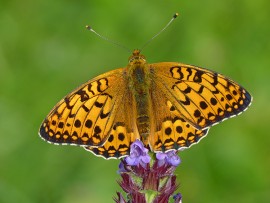
-3164899931.jpg)
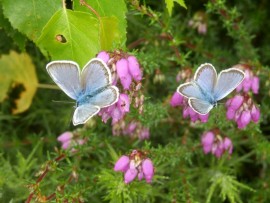
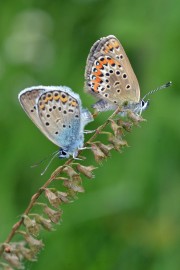
-neil-hulme-6725477292.jpg)
-neil-hulme-9426498534.jpg)
-neil-hulme-8460395140.jpg)
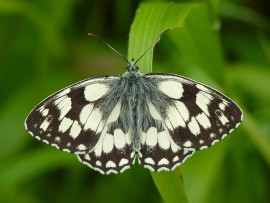
-neil-hulme-4893022486.jpg)
-neil-hulme-4196393992.jpg)
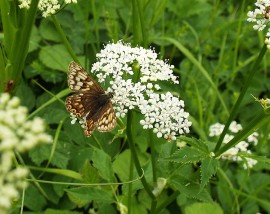
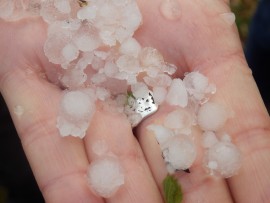
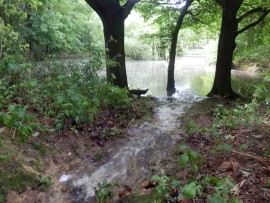
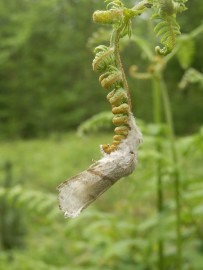
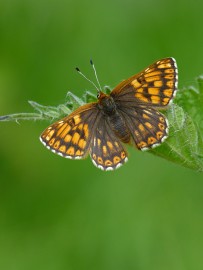
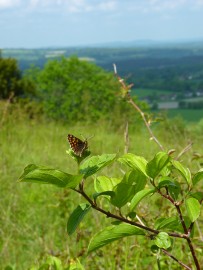
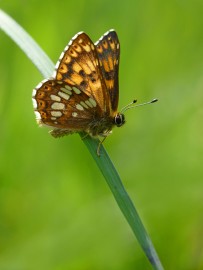
A while back when I met Neil I asked his opinion regarding just this subject as I had my concerns.
So some of my anecdotal comments.
I live in a rural area and the Herald of Spring did not happen, at home I saw one Peacock and one Small Tortoiseshell in the garden and the Commas which are normally common in the garden were just not there. I have only seen two Grizzled Skippers this year one at Black Cap and one at Heyshott As for Small Coppers - a great Big zero, although normally you can't miss them locally .White Admirals? I have seen one so far. Green Veined White, what's that?
Going to key sites is so misleading,its what's going on in the wider environment that's important and members sightings are important for every species.
The Big Butterfly count Friday 15 July - Sunday 7 August will be telling this year. Please all contribute as all your records will count.
Damsel flies, Dragonflies have been sparse and have since vanished completely . Broad Bodied Chaser, I've only seen one in the garden this year.
Wasps, top predator in the insect ecosystem, absolutely non-existent again for about three years running. Hornets -, where are they, normally common where I live -! Bumble bees - very low numbers in my locality - I have one nest in the ground in the garden the workers are all tiny and the activity is sparse, two days ago I thought the nest was dead. By this time there should be larger workers. They aren't here . Red tailed Bumble bees not seen at all . Honey bees, clover is in flower - but there are few honey bees collecting nectar .
There was a good run on Aphids in the Garden a couple of months ago and large number of Harlequin Ladybirds as a result, Two spots and seven spots, I saw about 2 of each - they have vanished. Meadow Browns poor in abundance, although Ringlets locally seem to be reasonably plentiful. Slugs and snails doing well, - we can't live on them.
The real acid test for this year will be the invaluable Transect Walkers records as this will give the correct trend results .
In theory Horseshoe Vetch will have had a good growing season - so will there be an explosion of Chalk Hill Blues this season?
Let's hope for a good run of sunny weather and perhaps late summer will be more promising. Ever hopeful that our resilient Butterflies will bounce back.
(Richard Roebuck)